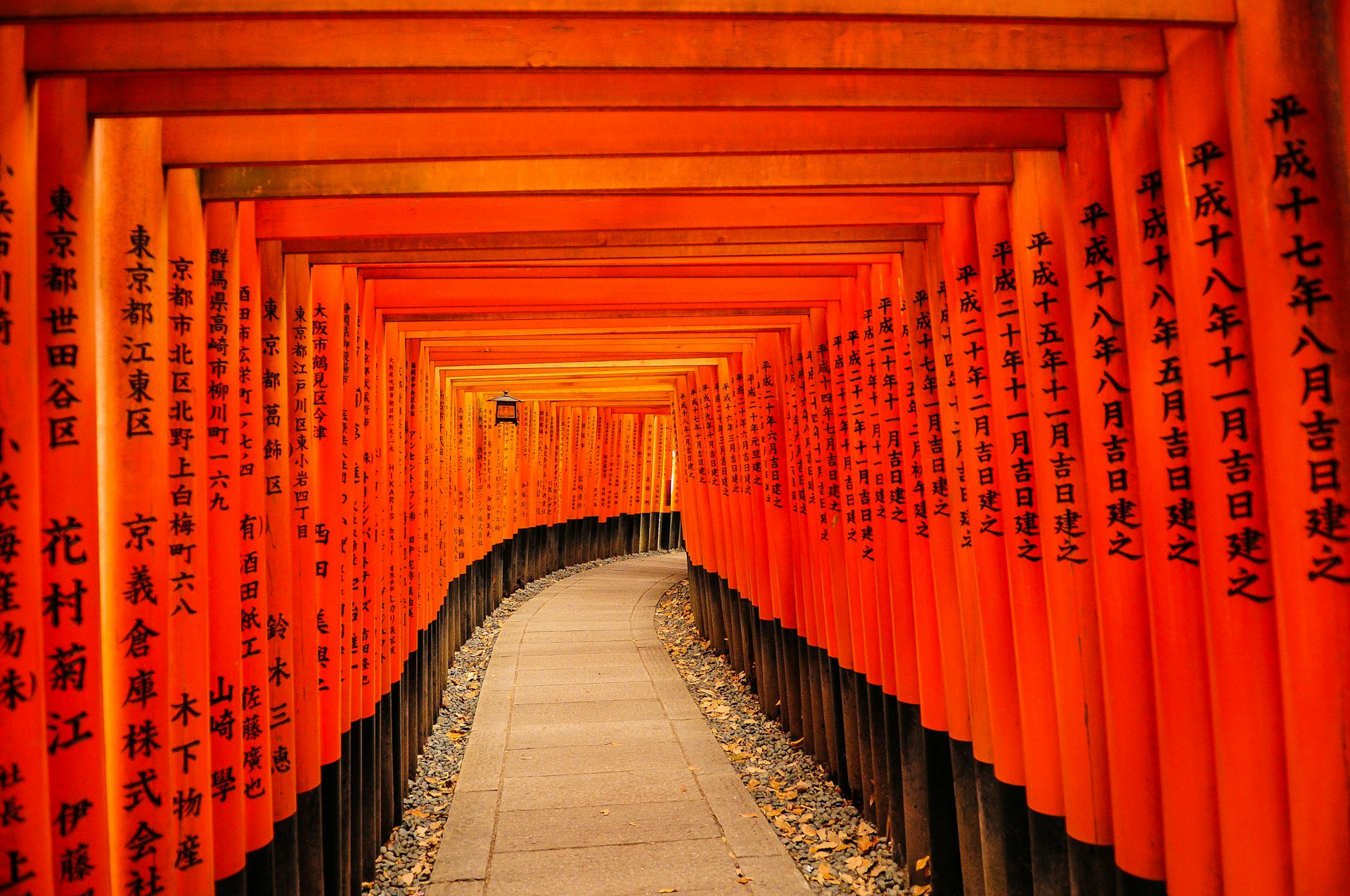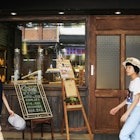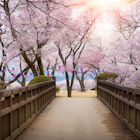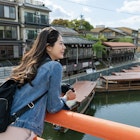Kyoto has a reputation as an expensive city to visit, but it's much more affordable than you might realize.
In addition to high-end kaiseki restaurants and luxury ryokan hotels, Kyoto has plenty of options for accommodations, dining and exploring that won’t break the bank – you just need to know where to look.
Here are the top tips for exploring Kyoto on a budget.
Check different airports to find the best deal
Kyoto doesn’t have an airport of its own, but two are located in the neighboring Osaka prefecture: Itami (Osaka International Airport) and Kansai International Airport (KIX). Itami is closer, but KIX is larger, so check flights to both to find the best deals.
If you’re arriving at KIX and don’t have a JR Pass, the Icoca & Haruka card will get you a big discount on the JR Haruka train to Kyoto. Depending on where you’re flying from, it might be cheaper to fly to Tokyo and then take the Shinkansen (bullet train) the rest of the way.
Look into the JR Pass if you’re traveling from Tokyo
For those heading to Kyoto from the capital, the Shinkansen is the quickest and most convenient option. It’s not necessarily the cheapest, but the Japan Rail Pass will cover the entire trip.
The JR Pass gives tourists unlimited travel on all JR trains (apart from the Nozomi Shinkansen) for seven, 14 or 21 days. This won’t save you money if you’re staying in Kyoto for your entire trip, but if you’re traveling across the country, it’s worth considering. It’s cheaper to buy the JR Pass outside of Japan, so get yours in advance to enjoy maximum savings.
Avoid major events
The amount you spend on a trip to Kyoto will depend on the time of year, particularly when it comes to accommodations. The spring cherry blossom season (between March and May) is by far the most expensive period, followed by the fall foliage season from October to mid-December.
Rooms often sell out a year in advance during these times, and prices increase dramatically. By traveling outside of these months, you’ll not only benefit from cheaper costs, but the crowds will also be smaller.
Make the most of transport passes
Kyoto has an excellent public transport system, which makes renting a car in the city an unnecessary expense. The buses, trains and subway are all relatively inexpensive and efficient, plus you can save even more money with transport passes if you’re doing a lot of traveling.
All-day passes are available for unlimited travel on buses in the city center, plus one- and two-day passes for unlimited travel on the subway and city buses. They also get you discounts at certain attractions, such as Nijō-jō castle and the Kyoto International Manga Museum.
Explore by bike or on foot
As a relatively compact city that’s mostly flat and easy to navigate, Kyoto is a great place to explore by bicycle or on foot. Bike rental stores are all over the city, and renting one for the day can be a cheap way to reach sightseeing spots outside the city center, such as Kinkaku-ji temple and the Arashiyama district.
Walking is not only the cheapest way to explore central Kyoto, but it’s also often more convenient and pleasant than taking the bus. Routes such as the Path of Philosophy, which leads along a canal up to Ginkaku-ji temple, are attractions in themselves, and you’ll experience more of the city when discovering it this way.

Lots of Kyoto’s top attractions are free
Perhaps surprisingly, given Kyoto's reputation as an expensive city, many of its most famous attractions don’t charge an entrance fee. For example, the ethereal Arashiyama Bamboo Grove, colorful Yasaka Jinja shrine and endless red torii gates of Fushimi Inari-Taisha are completely free to explore.
Similarly, several temples, such as Nanzen-ji and Chion-in, allow visitors free access to the grounds and only charge if you want to enter certain buildings or gardens. As such, it’s easy to plan interesting and enjoyable days out that won’t dent your wallet.
Lunch is an affordable time to try kaiseki
If you want to experience Kyoto’s famous kaiseki ryōri (seasonal multicourse haute cuisine) without breaking the bank, lunch is the time to do it. You’ll find the prices much lower – in some cases, literally half the price of dinner – but the quality is just as high. Reservations are usually still essential.

Eat like a local
Plenty of restaurants in Kyoto cater to budget travelers, especially outside the major tourist hotspots. Japanese cuisine tends to be cheaper than international fare, with noodle dishes like ramen, soba and udon as well as rice dishes such as donburi and curry rice being particularly affordable. To cut costs even further, pop into a tachigui (stand-and-eat) restaurant at a train station or in the downtown shopping area.
Look out for teishoku set meals
Most Japanese restaurants offer teishoku, or set meals, on their menus. These are cheaper than ordering a la carte and usually consist of a main dish plus rice, soup and a side dish. Some will also have a drink and/or dessert included, making them fantastic options for eating on a budget in Kyoto.
Pick up a picnic
Another inexpensive dining option when the weather’s good is a picnic in one of Kyoto’s many spacious and picturesque parks. Convenience stores have a wealth of tasty and filling food options such as onigiri rice balls and noodle dishes, plus bakeries do a great range of pastries, sandwiches and other snacks.
Business hotels offer affordable accommodations
Kyoto has accommodation options to suit every budget, and business hotels are a great choice if you want something clean, comfortable, conveniently located and affordable. Rooms tend to be small but well-equipped, and service is always good.

Stay in a capsule hotel
If you really want to save some cash and plan to be out all day, consider staying in a capsule hotel. This involves sleeping in a pod-like compartment straight out of a sci-fi movie, with shared bathroom facilities and other communal spaces, plus lockers for your belongings. They’re not the most comfortable options for long stays, but if you need a cheap place to rest, they're an excellent budget option.
Hit up the konbini and 100-yen shops
Convenience stores (konbini) in Japan are good for more than just cheap meals. If there’s anything you've forgotten to pack, either they or a 100-yen store will almost certainly have you covered at a low cost.
Average daily costs in Kyoto
Hostel room: ¥3700–¥6000
Basic room for two: ¥18000–¥21000
Night in a capsule hotel: ¥3000
Self-catering apartment (including Airbnb): from ¥12000
City bus flat fare: ¥230
Subway day pass: ¥800
Coffee: ¥300
Onigiri rice ball: ¥130
Dinner for two: ¥4000–¥6000
Beer at the bar: ¥450–¥600












